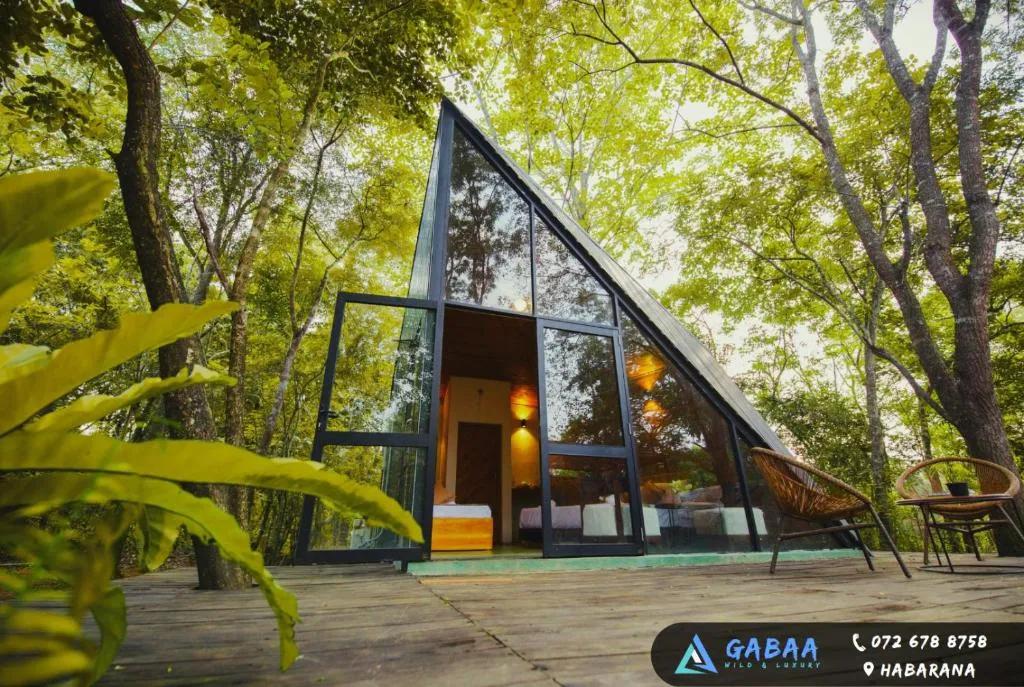
Sri Lanka's coastline stretches 1,340 kilometers and features some of the country's most beautiful beaches. Most visitors barely scratch the surface of these coastal treasures. Our island welcomed 1.9 million tourists in 2019, yet many stunning shores remain peaceful and untouched.
My years of learning about our hidden coastal spots have taken me from the peaceful Uppuveli Beach to Mannar Island's untouched shores. These locations offer something unique - the south and west coasts are at their best from November to April, while the east coast shows its magic from May to September. This natural rhythm creates endless opportunities to enjoy beach time throughout the year.
Let me share my local knowledge to help you find secluded coves, quiet fishing villages, and perfect swimming spots that rarely appear in guidebooks. These beaches still offer moments of peace where you can truly connect with local communities and experience Sri Lanka's authentic coastal charm.
Discovering Sri Lanka's Secret Coastal Gems
A hidden beach means more than just seclusion to locals like me. These coastal havens have pristine shores where fishing boats outnumber tourist umbrellas. You might be the only one leaving footprints in the sand. Goyambokka Beach near Tangalle represents this perfectly with its serene cove setting that creates a romantic escape atmosphere.
We found that there was a reason these beaches stay hidden - their unique locations. Many beaches like Rekawa sit nestled among marshlands, mangrove forests, and lagoons. Their distance from major tourist spots naturally keeps visitor numbers low. Kalpitiya is a great example - this untouched peninsula has Sri Lanka's finest cluster of eco-lodges and spectacular pods of spinner dolphins.
Sri Lanka's distinct seasonal patterns determine the best times to visit these hidden gems. Each region has its perfect season:
- Southern and Western Beaches: Peak from November to April
- Eastern Coast: Shines between May and September
- Northern Shores: Best visited from May to September
May sits between both monsoons and gives you exceptionally quiet beaches to explore. September is a chance to explore northern and eastern shores before their monsoon season begins.
Visiting during shoulder seasons comes with extra perks. Secret Beach in Mirissa stays peaceful during early mornings before crowds gather later. Places like Uppuveli and Nilaveli on the east coast stretch for miles with sleepy, unspoilt beaches that are perfect for total escapism.
These hidden spots shine in their natural state. Polhena, though small, has vibrant coral reefs where you can snorkel alongside playful sea turtles. Madiha serves as a quieter alternative to popular spots with consistent waves and cozy local cafes that serve fresh seafood.
Hidden Beaches in Southern Sri Lanka
The best beaches in Sri Lanka lie along the southern coastline, still wonderfully hidden from mainstream tourism.
Secret coves near Galle
Hidden Beach in Galle stretches pristinely, making it perfect for peaceful morning walks. This secluded paradise doesn't have modern amenities, but its crystal-clear waters and unique sand make the trip worthwhile. The beach got its name from its hard-to-reach paths and thick surrounding foliage - the sort of thing I love about hidden spots.
Jungle Beach sits quietly near Unawatuna and stands out as a hidden gem. While it used to be a secret spot, the beach keeps its charm thanks to the thick jungle that surrounds it. You can truly connect with nature here without fighting through tourist crowds.
Undiscovered spots in Matara
Talalla Beach shines as one of Matara's most peaceful escapes. The beach stays warm at 30°C or above, which means you can swim here all year round. This crescent-shaped paradise has:
- Fresh seafood from local restaurants
- Beginner-friendly surf spots
- Yoga retreats
- Marine life viewing opportunities
Polhena, just two kilometers from Matara, shows off small idyllic beaches with great snorkeling spots. Indian Ocean currents meet here, creating a perfect home for marine life.
Local fishing village beaches
Tangalle holds some of the most authentic coastal spots I've found. The area feels like a sleepy fishing village where you can watch local fishermen bring their catch ashore. The real magic lies in the many hidden coves along the coastline.
Goyambokka Beach near Tangalle blends peace with convenience perfectly. The beach stays pristine yet offers basic amenities like beachfront shops and cheap coconuts. Silent Beach next door has amazing food at its cozy beach bars.
Blue waters sparkle in countless shades around these southern beaches, creating a true tropical paradise. These spots are getting more popular with travelers, but they still keep their raw, unspoiled character that makes them the best beaches on Sri Lanka's south coast.
Eastern Coast's Untouched Paradise
Sri Lanka's eastern coastline reveals a different kind of magic where pristine shores meet crystal-clear waters.
Remote beaches near Trincomalee
Nilaveli Beach, 16 kilometers north of Trincomalee, stands as the ultimate tropical paradise with its 4-kilometer stretch of powdery white sand. The beach has shallow waters that create ideal conditions for swimming and water sports. These features make it perfect for families and beginners alike.
Uppuveli Beach, a relaxed alternative just 6 kilometers north of Trincomalee town, features gentle slopes and calm waters. The beach has kept its authentic charm despite its developing tourism scene. The waters become exceptionally clear between May and September, which creates perfect conditions for snorkeling.
Marble Beach, which the Sri Lankan Air Force manages to keep, stands out with its distinctive marble-like sand quality. Its crystal-clear waters look like a natural swimming pool and give visitors a unique beach experience.
Hidden lagoons of Batticaloa
Batticaloa Lagoon stretches an impressive 56 kilometers and creates one of Sri Lanka's most extensive estuarine ecosystems. The lagoon connects to the sea at two points - one at Kallar and another at Palameenmadu.
A mysterious phenomenon known as the 'Singing Fish' happens near Kallady Bridge from April to September. The lagoon's ecosystem supports:
- Extensive mangrove swamps
- Diverse seagrass beds
- Rich marine biodiversity
- Abundant water bird species
Secret swimming spots
Pasikudah Bay, 35 kilometers northwest of Batticaloa, features an extended shallow coastline that's perfect for swimming. The bay's azure waters create an incredible sight as pristine white-golden sand stretches along the shore.
Waters around Pigeon Island National Park are among the finest spots for swimming and snorkeling on the east coast. Shallow waters surrounding the island showcase vibrant coral reefs that teem with tropical fish and occasional sea turtles.
The best time to visit these eastern paradise spots is between May and September. The waters stay calm and visibility reaches its peak during this period. The region's relatively undeveloped coastline lets visitors escape busy tourist areas and experience authentic Sri Lankan coastal life.
Northern Sri Lanka's Secret Shores
Sri Lanka's northern shores reveal a world where pristine beaches blend with rich cultural heritage. These shores are home to some of the island's most secluded coastal spots.
Unexplored peninsulas
The Jaffna Peninsula is evidence of natural beauty and cultural resilience. The sun rises like a golden globe through the mist-covered landscape at dawn. Life throbs through the peninsula as sarong-wearing sherbet sellers and wholesale fish markets create a vibrant atmosphere. Golden rice fields dotted with swaying fan palms complete this scenic view.
Casuarina Beach on the Jaffna peninsula has crystal-clear water and powdery, soft, white sand. This beach remains one of the northern region's finest swimming spots since it stayed protected from pollution and conflict's effects. A smiling crescent shapes the shore where fishermen watch over the dawn.
Remote island beaches
Mannar Island lets you escape into simplicity. Visitors quickly notice the untouched pristine beaches and nature trails that are perfect for long hikes. The island is a chance to explore the 'Giant Tank,' a three-mile lake where you can watch birds and enjoy sunset views.
Delft Island takes an hour-long boat ride from Kurikadduwan Jetty and shows a unique mix of natural beauty and colonial heritage. The island features:
- Wild ponies left behind by Portuguese settlers
- Coral and limestone formations
- Palm-fringed beaches
- Abundant flamingo populations
Local access tips
February to September is the best time to explore these northern shores - the driest and sunniest period. Travelers should know that many areas have simple accommodation options.
Kankesanthurai Beach gives one of the northern region's safest swimming experiences. The area grows as a center of attraction and shows spectacular views of the KKS lighthouse and Naval Port.
Charty Beach on Velanai Island is a white sand paradise that works well for family visits if you want complete seclusion. The peaceful morning atmosphere creates perfect moments to experience authentic Sri Lankan coastal life.
Getting to these hidden gems needs good planning. The AB21 road is the most reliable route to northern beaches, though you might spend more time on it than other paths. Remember that most beach facilities close at 6:30 PM, so arrive early to enjoy a full day.
Preserving Paradise: Responsible Beach Tourism
Sri Lanka's coastal treasures need a perfect balance of tourism growth and nature protection. Our island nation depends on coastal ecosystems, and our steadfast dedication to green beach tourism shapes these natural wonders' future.
Supporting local communities
Community-based tourism (CBT) is the life-blood of responsible beach tourism in Sri Lanka. CBT initiatives help 750,000 Sri Lankans annually affected by natural disasters through better disaster risk reduction strategies. Local communities earn direct economic benefits when travelers choose community-led experiences through:
- Skill development workshops for housewives
- Local craft markets and eco-friendly product sales
- Traditional cooking experiences with families
- Guided tours by indigenous communities
Environmental conservation efforts
The Marine Environment Protection Authority (MEPA) has launched major conservation projects in our coastal regions. The Sri Lanka Mangrove Conservation Project protects 21,782 acres of existing mangrove forests. These forests create natural barriers against coastal erosion and support marine biodiversity.
Sri Lanka's marine conservation work earned global recognition. The UN Environment Program awarded us a global restoration reward for excellence in mangrove management. These projects protect ecosystems and create new income sources for coastal communities.
Sustainable beach tourism practices
The Blue Flag Program and MEPA's oversight brought strict environmental standards to our beaches. This prestigious eco-label needs strict criteria covering:
Hotels have improved their environmental management by a lot with innovative solutions. To cite an instance, some properties save over 14 million liters of freshwater annually through advanced water management systems.
The National Sustainable Tourism Certification (NSTC) framework helps tourism operators assess themselves. It measures how well they follow nine significant principles like sustainability management, water conservation, and community involvement. This approach lines up beach tourism growth with environmental protection goals.
Local fishing communities make sustainable coastal management possible. Their traditional knowledge combines with modern conservation techniques to protect marine ecosystems while supporting their livelihoods. Government bodies, nonprofits, and businesses work together to tackle problems like abandoned fishing gear and marine pollution.
Conclusion
Paradise still exists in Sri Lanka's hidden beaches, untouched and ready for mindful travelers. Years of learning about these secluded shores have taught me that timing is crucial. The southern beaches shine between November and April, while the east coast reveals its magic from May to September.
These pristine shores deliver more than scenic views. Visitors can experience authentic village life in local fishing communities and see conservation efforts protecting our coastal treasures. The Sri Lanka Mangrove Conservation Project stands as a prime example of tourism and environmental protection working hand in hand.
My trips across 1,340 kilometers of coastline have shown that the best beach experiences come from respecting local communities and their ecosystems. Each hidden gem tells its story through crystal-clear waters and powdery sand. You can snorkel at Polhena's coral reefs or watch spinner dolphins dance at Kalpitiya.
These secluded paradises remain hidden because of careful preservation efforts. Take time to connect with local communities during your visit. Support eco-friendly tourism and embrace the authentic coastal charm that makes Sri Lanka's hidden beaches truly special.



